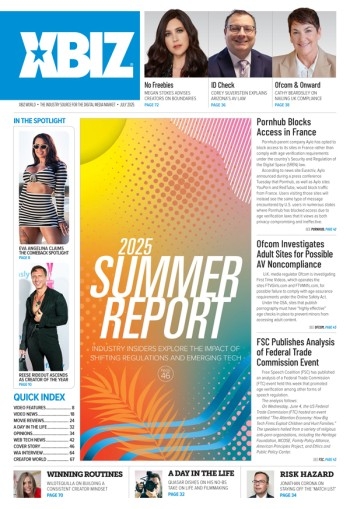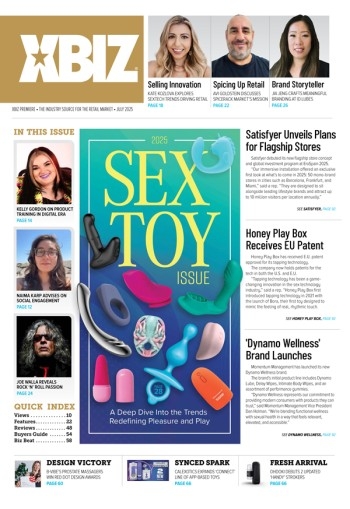"What am I supposed to do?" That's a question your visitors may be asking, and one you need to avoid at all costs. It's like a disease that will do nothing more than cost you sales and traffic. The solution is to "take them by the hand." Tell or show them, literally, what you want them to do -- even if it's simple or obvious.
Adding "hand-holding" components to your website is not just about Web usability, it's about directional marketing. In order to encourage longer stays, repeat visits and, of course, online sales, you need to direct your audience to take action. And you need to make it easy for them to do so, whether you're directing them to click, join, enter, type, download or buy.
If you don't, with today's leery and click-happy audience your site will be no more than a passive, electronic billboard -- a mere blur. Your website may be a beautiful work of art, and it may also drive traffic because of its educational or entertainment value. But if they ask, "what am I supposed to do," you may in turn be left asking, "why is my site not making any sales?" Rick Olson (see https://www.ibizcenter.com/), in his Internet Business Informer ezine, said it best: "While there is debate on whether the Web is all about direct marketing or branding, the fact remains that you probably want to elicit some kind of response from your visitor." I concur. In fact, even big-brand sites like Coke.com and Nike.com, whose purpose is to increase brand awareness and build brand equity, use direct marketing.
On the other hand, while the Internet offers us the ability to gain the attention, consent and response of such a discerning audience, I also admit that succeeding in doing so is a whole different issue. I'm far from being a Web usability guru, like Dr. Jakob Neilsen (see https://www.useit.com/jakob/). But what I do know, from experience and research, is that much of the Web still lacks a certain friendliness. It lacks *direction*.
Specifically, when I conduct critique consultations I notice that about 85% of the sites I analyze fail to adequately lead visitors to take some kind of action, be it through the copy, design or navigation. When I visit some of these sites for the first time, I ask: "What am I supposed to do?" Obviously, if I feel that way, most visitors probably feel the same way, too.
Studies show that a large majority of sites are confusing to, or misunderstood by, their target audiences. According to Joe Gregory (see https://www.webaim.co.uk/), 97.7% of the sites that his company evaluated failed or are poorly marketed, and 82.2% of them lacked a clear objective. For example, he found that it was difficult to find the phone number on sites that encouraged people to call, and that it was a challenge, if not impossible, to order online on sites that sell products. (Joe Gregory found that some sites even omitted prices. In my experience, websites also frequently "hide" their order forms, making them inconspicuous at best.)
During the early days of the Web, when it was mostly populated by programmers, the Internet was filled with technical jargon. The need to design websites and have them communicate in a way that most people can understand was nonexistent. The pioneers and the first "colonizers" of the Web understood the dynamics of the Internet. They easily recognized links, markup, files, tags, network protocols, and so on. This is no longer the case.
Few people will buy from a website that confuses them in the slightest. In fact, according to Gregory's research mentioned earlier, 46.6% of the sites his company evaluated targeted a general audience or used a language that only experts would understand.
As more people enter the Web for the first time, the online population of "newbies" continues to grow. Of course, people don't remain newbies forever. But even users who are a little more technologically savvy can get easily confused by a poorly thought-out website. When visiting a site for the first time, they become newbies all over again as every site has its own style, focus, copy and message.
Therefore, it's extremely important to use words, layouts and navigational structures that help the visitor to navigate your site and find what they want while strategically directing their actions. By doing so, you will immunize your website against this lack of direction. Now, there are many ways to accomplish it. And to list the steps within the confines of this article is impossible -- our resident site reviewer, Ralph Hilliard at https://WordNetUniversity.com/, has a site completely dedicated to the subject. But here are some of the most obvious ones:
1) Above all, start a heading with a verb, which tells people exactly what to do or what they will be doing. For example, if a link leads to your guest book, use the words "sign (or view) our guest book," rather than just "guest book." If the link leads to a product description page, include the words (benefits, too), "Discover how life-altering widgets will give you up to 179.3% more of [whatever the benefit is]."
2) Without overdoing it, include the words "click here" (or something to that effect) within text links. If your site offers thumb nailed images for example, include "click to enlarge" somewhere near the image. In short, show visitors not only what they must do, but also what they *can* do. You would be amazed to know how many of your visitors fail to do something just because they don't know it is possible.
3) More importantly, keep your links underlined. Web designers often opt to remove them for esthetic reasons, such as with the use of style sheets or javascript. But underlined links are important visual guides; without them, the majority of people will not know the link exists and will inadvertently ignore it. Take a look at https://www.engage.com/. The links contain either underlines (even within graphical texts) or the words "click here." Include navigation bars with links on the top, side(s) and bottom. In other words, make it easy for your visitors to know exactly where they are at any time...
4) Include navigation bars with links on the top, side(s) and bottom. In other words, make it easy for your visitors to know exactly where they are at any time, as they read or scroll down your webpage, and where they can go next. Of course, if your page is small and fits within a window at the smallest resolution, offer only one -- and use common sense. But if a visitor needs to scroll, in any way, make it easy for them to know at the very least how to return (such as with "back to top" links, evenly distributed throughout).
5) The reverse is also true. If you want your visitors to do one thing and one thing only, then don't distract them with too many links, particularly external ones that can easily take them away from your site. (This is particularly true with long copy or direct response websites.) For example, if you offer too many choices, users will find it hard to make a decision. Instead, offer more choices further in the site based on the specific path(s) a user follows.
Essentially, realize that directional marketing is important and will be more important as time goes on. If your site does not direct its visitors to take some kind of action, or fails to lead them to some sort of outcome, then you will need to seriously rethink your site's purpose and strategy. The more qualified your visitors are and the more compelling your message is, the higher will be the percentage of visitors that will buy. Or that will refer others. Or that will return to the site. Or that will join your mailing list. Or ...





